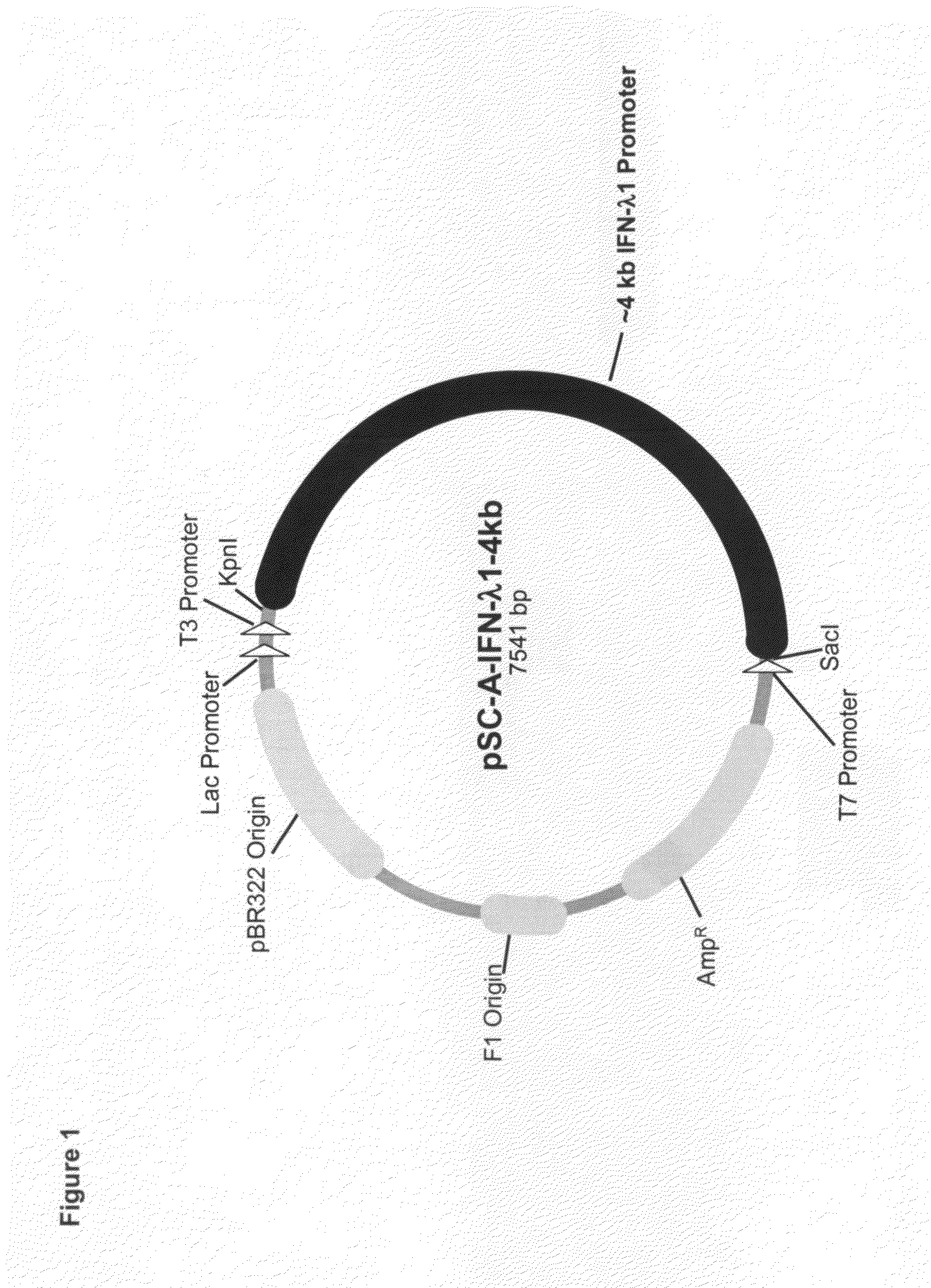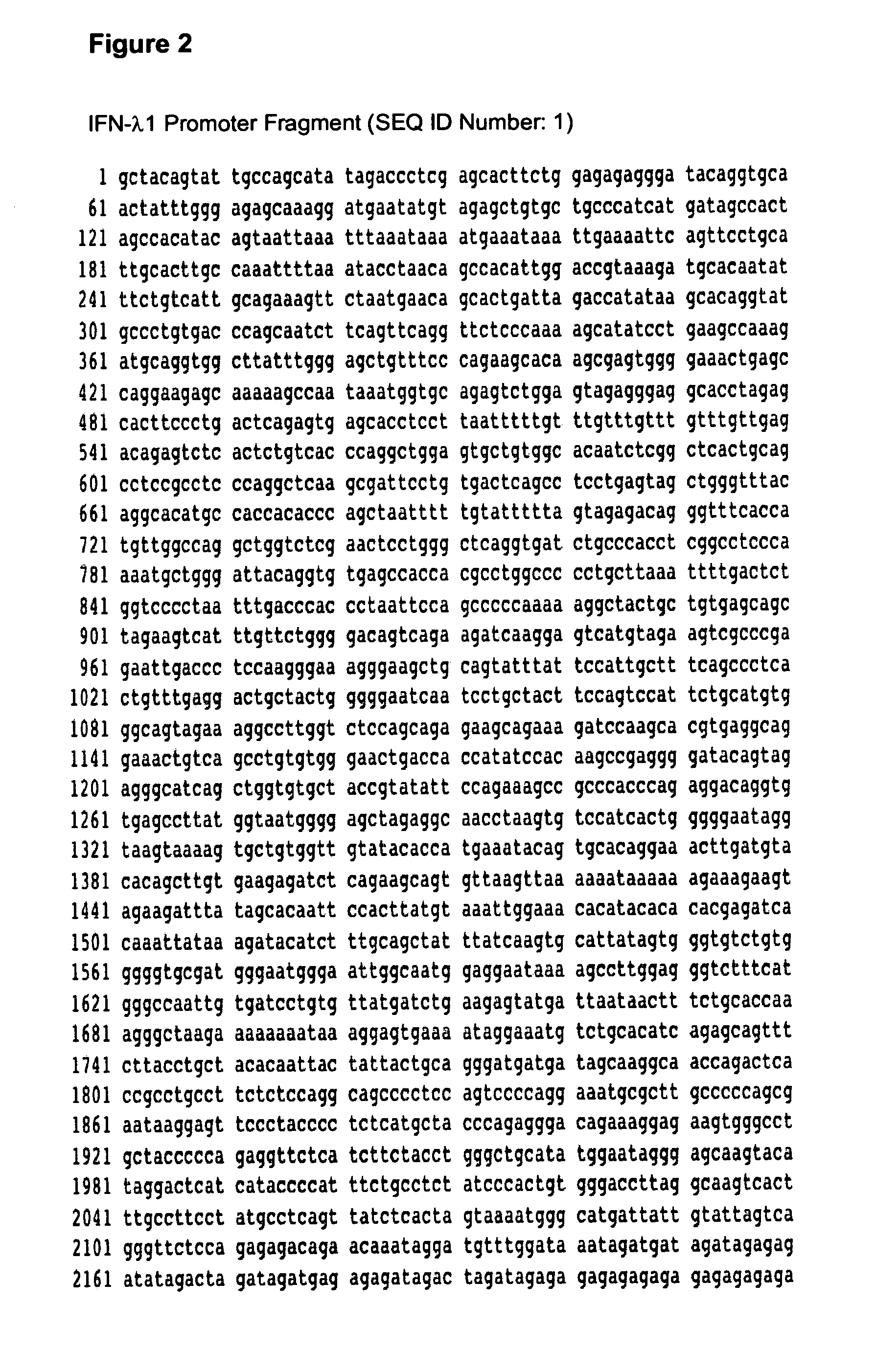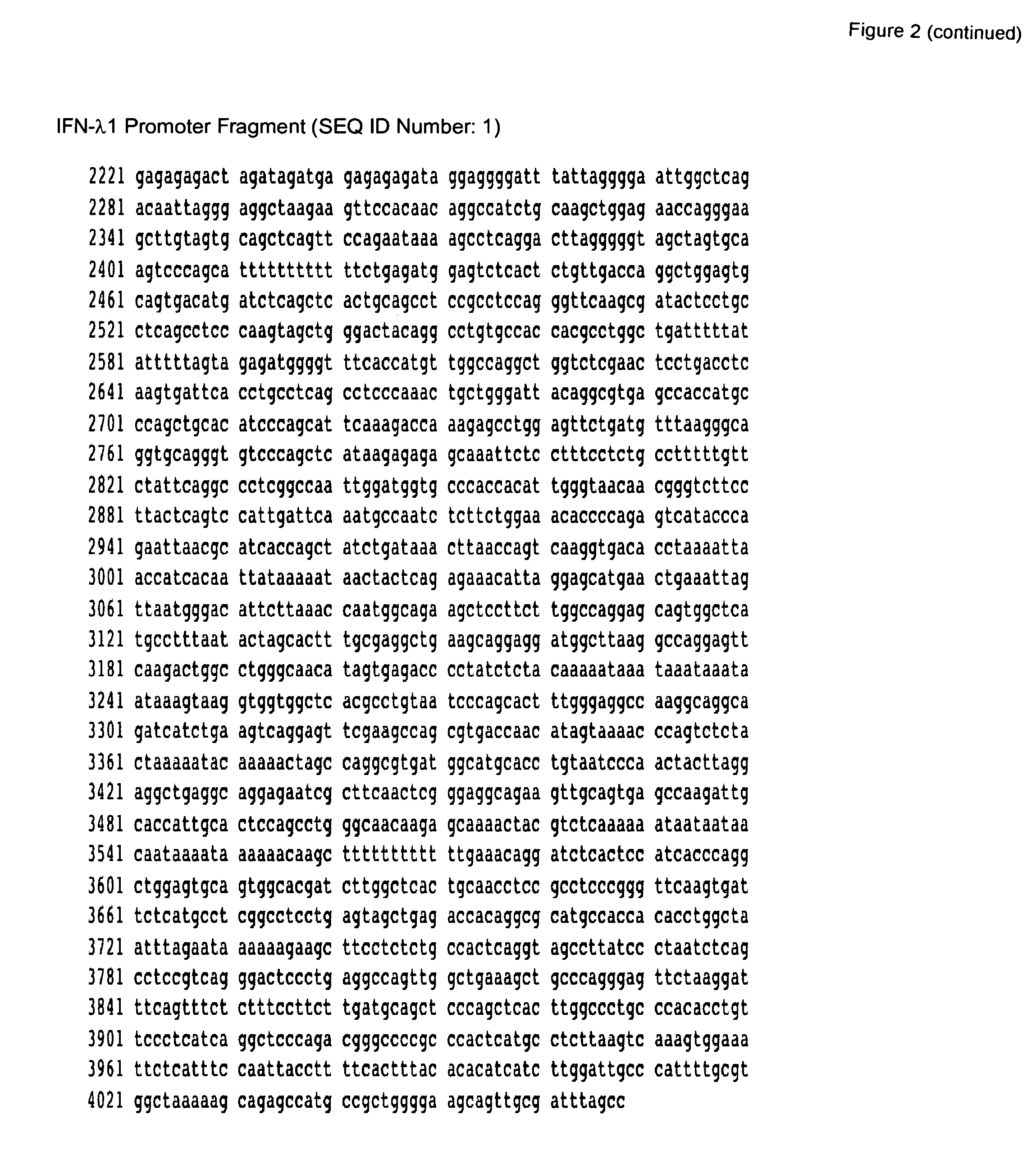Identification of a novel repressor on IFN-lambda promoter and siRNA against ZEB1 and BLIMP-1 to increase IFN-lambda gene activity
a technology of ifn-lambda and promoter, which is applied in the field of identification of a novel repressor on ifn-lambda promoter and sirna against zeb1 and blimp1 to increase ifn-lambda gene activity, can solve the problems of limited success in characterizing the regulatory elements of ifn-1 promoter, the regulatory elements of these upstream structures have not been defined, and the effect o
- Summary
- Abstract
- Description
- Claims
- Application Information
AI Technical Summary
Benefits of technology
Problems solved by technology
Method used
Image
Examples
example 1
Cloning of IFN-λ1 Promoters
[0121]We studied the genomic structure of the IFN-λ1 promoter and the role of transcriptional regulation in IFN-λ1 promoter. Onoguchi et al. in 2007 prepared a promoter construct containing a ˜600 bp IFN-λ1 promoter linked to a minimal promoter of IFN β gene (i.e., containing a TATA element). Using the hybrid promoter construct, Onoguchi et al. showed that transcriptional sites (NF-κB and IRF) are involved in IFN-λ1 promoter regulation following stimulation with a mouse virus (i.e., Newcastle disease virus) (Onoguchi et al., 2007). The hybrid promoter, while yielding limited information about IFN-λ1 transcription; nevertheless it does not represent the authentic IFN-λ1 promoter. It should be noted that the ˜600 bp IFN-λ1 promoter simply cannot account for the complex IFNλ1 gene regulation.
[0122]In this study, we first prepared an IFN-λ1 promoter construct upstream from that of the IFN-λ1 translation start site (i.e., ATG). We used PCR approach with a speci...
example 2
Nucleotide Sequence of the ˜4 kb IFN-λ1 Promoter Fragment
[0123]The ˜4 kb promoter fragment was sequence-verified. We used multiple primers directed against the forward and reverse strands using the DTCS Quick Start method performed on a CEQ 8000 Genomic Analyzer (Beckman Coultier). We compared the nucleotide sequence of the ˜4 kb promoter fragment with the nucleotide sequence of the IFN-λ1 gene (GenBank Accession Number, NT—011109) and verified that there were no mutations introduced through PCR cloning. The nucleotide sequence (SEQ ID NO: 1) of our ˜4 kb IFN-λ1 promoter fragment is listed in FIG. 2.
example 3
Cloning of a Luciferase Reporter Construct Containing the ˜4 kb IFN-λ1 Promoter
[0124]In this study, we sub-cloned the ˜4 kb IFN-λ1 promoter fragment into a luciferase reporter construct (i.e., pGL4.10 luciferase reporter which contains solely the luciferase coding region and no regulatory elements) (FIG. 3). We used restriction endonucleases Kpn1 and Sac1 for the sub-cloning. The resulting luciferase reporter construct containing the ˜4 kb IFN-λ1 promoter fragment is named pGL4.10-IFN-λ1-4 kb plasmid. (FIG. 3).
PUM
| Property | Measurement | Unit |
|---|---|---|
| volume | aaaaa | aaaaa |
| volume | aaaaa | aaaaa |
| concentration | aaaaa | aaaaa |
Abstract
Description
Claims
Application Information
 Login to View More
Login to View More - R&D
- Intellectual Property
- Life Sciences
- Materials
- Tech Scout
- Unparalleled Data Quality
- Higher Quality Content
- 60% Fewer Hallucinations
Browse by: Latest US Patents, China's latest patents, Technical Efficacy Thesaurus, Application Domain, Technology Topic, Popular Technical Reports.
© 2025 PatSnap. All rights reserved.Legal|Privacy policy|Modern Slavery Act Transparency Statement|Sitemap|About US| Contact US: help@patsnap.com



